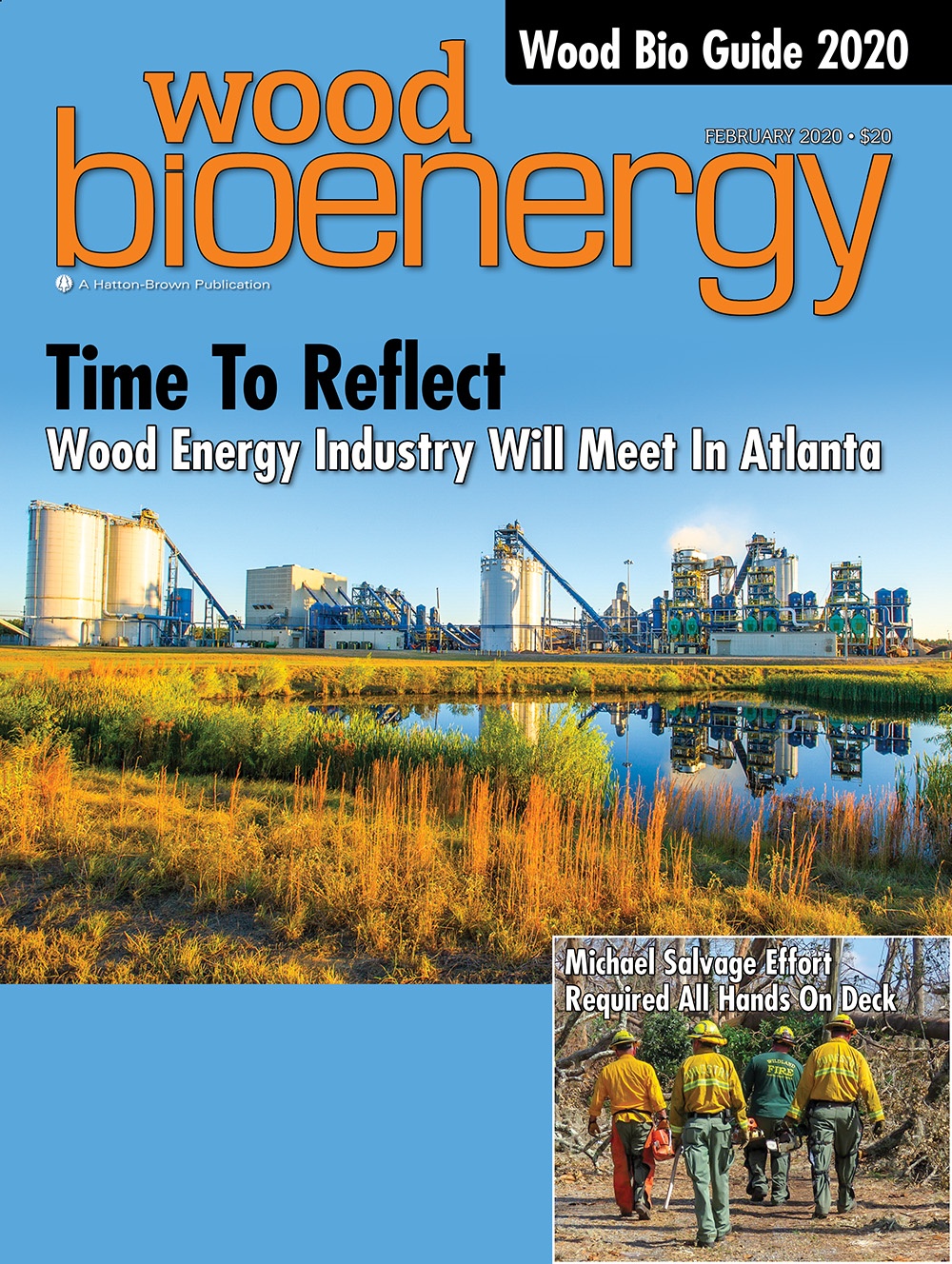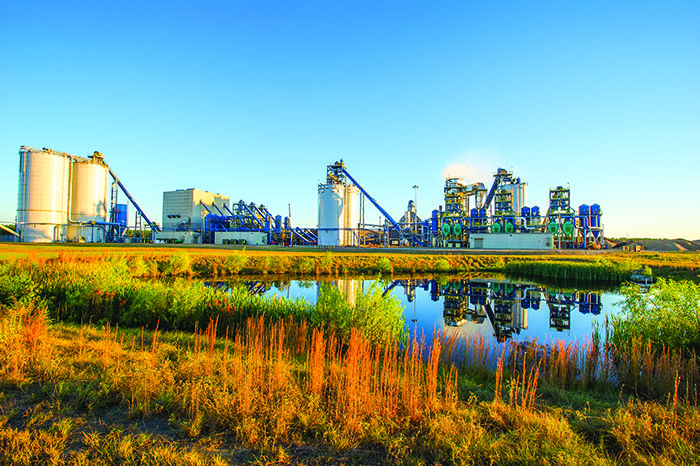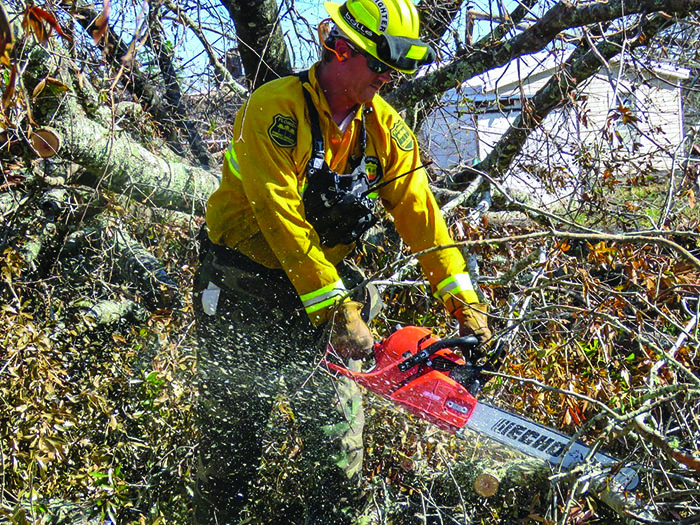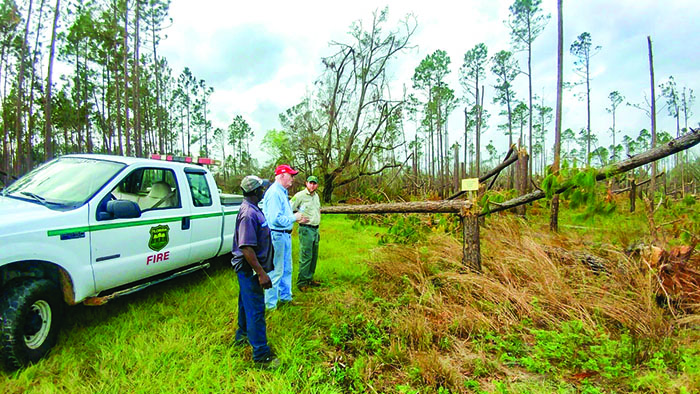
Inside this issue
From the Editors
Cover Story
In the News
Pinnacle Expands Presence In Southeast
Enviva Pellet plant Receives Thumbs Up
Drax Appoints White To Lead U.S.
Wood Bio Guide
Year-long reference devoted to equipment manufacturers, suppliers, products and services for the wood-to-energy industries, including wood pellets, biomass power, biofuels, in-woods chipping and biomass procurement.
Product News
ÅF, Pöyry Form AFRY
Governor Visits Hurst Boiler
Primex Tires Offered On Deere Machines
Advertising Index
Find Us On Social
From the Editors
If you want to learn the true state of the international wood energy industry, especially industrial wood pellets, then you should attend the sixth Wood Bioenergy Conference & Expo to be held March 10-11 at the Omni Hotel at CNN Center in Atlanta, Georgia.
The event, which is hosted biennially by Wood Bioenergy magazine, has developed a reputation for putting behind the podium the leaders and visionaries of the industry. And it is living up to its billing once again.
For example, leadership from North America’s largest producers of industrial wood pellets will deliver keynote talks mid-morning of the first day of the event.
Enviva President & CEO, not to mention co-founder of the world’s largest producer of wood pellets, John Keppler, will address How Renewable Wood Energy Can Help Solve the Climate Crisis. “There is no question that the greatest challenge facing us today is the growing climate crisis,” Keppler says. “As we turn to all the tools in our arsenal, the science is clear on the need for renewable energy to help meet our shared climate goals.”

Industrial wood pellet mills, such as Drax’s Morehouse Bioenergy wood pellet mill at Bastrop, La., will be a major subject of discussion at the Wood Bioenergy Conference & Expo (photo courtesy of Drax).
Keppler will provide an overview of the role that Enviva and the renewable wood bioenergy industry play as a part of a broader, modern solution that addresses many of the country’s most pressing environmental and economic concerns.
Scott Bax, chief operating officer of Pinnacle Renewable Energy, will speak on Partnering for Growth. “People, safety and culture are at the heart of Pinnacle’s growing wood pellet business,” Bax says. “Over the past two decades, Pinnacle has partnered with some of the world’s leading forestry companies to build safe, reliable and productive wood pellet plants.”
As of 2020, Pinnacle has partnered with five different forestry companies—Westervelt, Tolko, Canfor, West Fraser and Two Rivers Lumber—at six different pellet plants in Canada and the United States. Two of these facilities are currently under construction, one in High Level, Alberta, Canada and the other in Demopolis, Alabama.
“These partnerships have allowed Pinnacle to focus on using sawmill residuals in its pellet production, providing our partners with a reliable home for their residuals and providing our customers with quality pellets safely, on time,” Bax says.
Looking for an overseas point of view? Also scheduled is Raul Kirjanen, CEO of Estonia-based Graanul Invest. He’ll address Differences on How Biomass Is Produced and Delivered in Europe Versus the U.S.
If you want forecasts and trends, you won’t find anything better than the presentations from William Strauss, president of FutureMetrics, on What is the Future for Industrial Wood Pellets? and Jose Gonzales, senior principal at AFRY, on the Dynamics of the Global Pellet Market and Impact to North American Supply.
Additional sessions will address industry activism and Keeping the Environmentalists at Bay, the State of Advanced Pellet Technologies, and Successful Project Implementation.
The agenda, which continues to add speakers, is on pages 8-9. Approximately 50 equipment exhibitors will complement the program.
Visit www.bioenergyshow.com to register and to keep up-to-date.
Cover Story
By Patrick Dunning, Associate Editor, Wood Bioenergy
Estimates of successful wood salvage on timberland damaged by Hurricane Michael along the Florida Panhandle and southwest Georgia range from 10- 16%, accoding to authorities; mean while many logging outfits have scrambled to contribute to the salvage effort, and some have suffered because of the market ramifications.
Making landfall on October 10, 2018 near Mexico Beach in Bay County, Fla., the Category 5 hurricane speared the Gulf Coast with 155-160 MPH winds, leaving some communities still draped in blue tarp and desolate.
The Forest Inventory and Analysis Program (FIA), which will include U.S Forest Service assessments in areas affected by the storm, could conclude as early as March, providing a before and after footprint on timber plots.
Scott Griffin, Forest Management Chief of GFC, says the salvage effort concluded in spring 2019 for the most part. “A lot of the wood deteriorated after a while,” he says. “What we’re seeing now is internal damage. Combine dry season with pine bark beetles attacking stressed trees and you get unviable stands.”

Initial reports by Florida Forest Service estimated the value of timber damage at $1.3 billion, pillaging more than 2.8 million acres of forestland either catastrophically (347,000 acres), severely (1.04 million acres) or moderately (1.4 million acres). More specifically, FFS said the storm impacted 500 million trees, 16,000 private landowners and 233 communities (about 4.4 years of annual forest harvest in Florida).
The three counties most affected by the storm in the Panhandle were Bay, Calhoun and Gulf, but Gadsden, Jackson, Liberty, Franklin, Holmes, Leon, Wakulla and Washington counties also received damage.
Agriculture Commissioner Nicole (Nikki) Fried announced that the U.S. Dept. of Agriculture has allocated $380.7 million in federal block grant funding for Florida farmers devastated by Hurricane Michael, including direct relief for timber producers. The Florida Dept. of Agriculture and Consumer Services will administer the USDA block grants alongside the Florida Div. of Emergency Management.
FFS said more than 1.6 million acres of pine was damaged, along with 697,000 acres of mixed upland stands, and 503,000 acres of bottomland.


Want more content?
Wood Bioenergy is published and delivered 6 times per year tosubscribers worldwide. Readership includes corporate executives, mill ownership, mill management, logging contractors and equity venture interests. Wood Bioenergy is FREE to qualified readers.
Latest News
UK Government Signs Contract With Drax
UK Government Signs Contract With DraxDrax confirms it has signed a contract with the UK Government for a low-carbon dispatchable CfD (Contract for Difference) agreement to cover all four biomass units at Drax Power Station over the period April 2027 to March 2031....
Biomass Plant Coming To South Carolina
Biomass Plant Coming To South CarolinaStartup company Carolina Renewable Products recently announced a new biofuel plant to be located near Orangeburg, SC. The company’s $280 million investment will create 155 new jobs. The company plans to convert sustainable woody...
Logger Co-op Launches Wisconsin Chip Mill
Logger Co-op Launches Wisconsin Chip Mill A precedent-setting milestone was marked in Tilleda, Wis., with the launch of the United States’ first chip mill owned and operated by a logger cooperative—a major step forward for collaboration and sustainability in the...
Subscribe to Our Newsletter
Wood Bioenergy News Online hits the inboxes of subscribers in the wood-to-energy sectors.
Subscribe/Renew
Wood Bioenergy is published and delivered worldwide 6 times per year. Free to qualified readers in the U.S. Subscribers outside the U.S. are asked to pay a small fee.
Advertise
Complete the online form so we can direct you to the appropriate Sales Representative.
